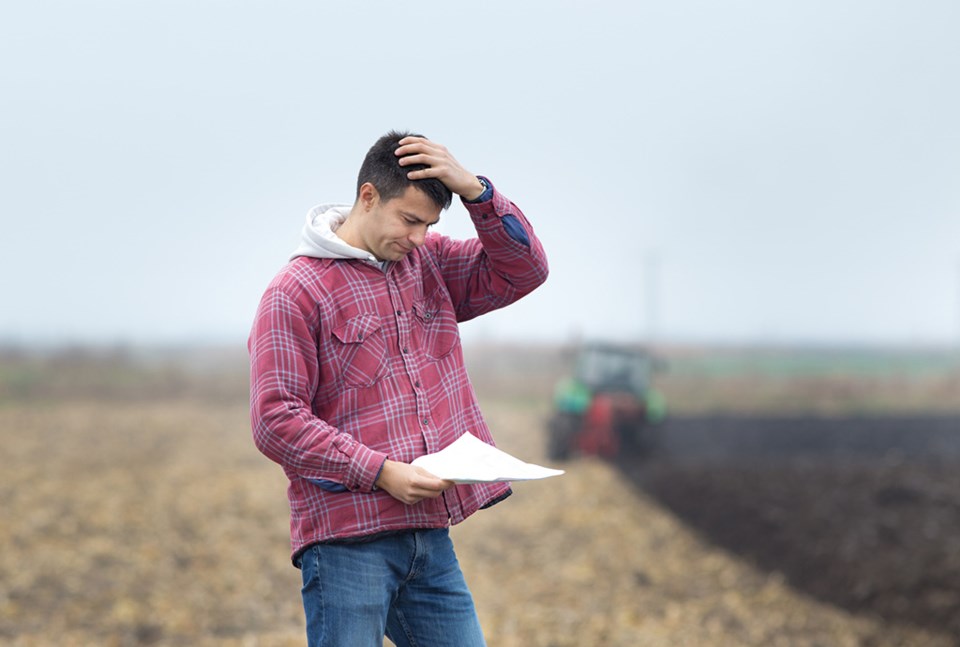WEST-CENTRAL CROP REGION — Most seeding operations have wrapped up in the West-Central Crop Region now that 99 per cent of the crop has been seeded, just above the five-year average (2017-2021) of 98 per cent. Producers in the region have been able to make steady progress all spring due to very little precipitation. With no recent moisture, early seeded crops are beginning to show signs of drought stress while later seeded crops have not yet emerged due to inadequate soil moisture.
No precipitation was received this past week and soil moisture conditions continue to deteriorate; producers are nervous about how much longer their crops can hold out. Cropland topsoil moisture is rated as zero per cent surplus, 12 per cent adequate, 44 per cent short and 44 per cent very short. Hay and pasture land topsoil moisture is rated as twelve per cent adequate, 42 per cent short and 46 per cent very short.
Forty-nine per cent of the fall cereal crops are in the shotblade stage and one per cent are heading, while 26 per cent of the spring cereals are tillering. Fifty-two per cent of canola and mustard is emerging and 27 per cent is in the seedling stage, along with 18 per cent of flax in the seedling stage. Sixty-six per cent of the pulse crops are emerging and 28 per cent is in the vegetative stage.
The majority of crop damage this week was due to strong winds that continue to dry out soils, flea beetles, and frost. Producers have been spraying steadily for flea beetles in their canola and some reseeding will be required where severe damage was done. With pastures –°¿∂ ”∆µ in poor condition, some livestock producers have not been able to move cattle and are running out of feed. There are reports that without rain or additional feed sources, many producers will be forced to cull large portions of their herds.
Provincial Overview
Over the past week, producers across the Saskatchewan grain belt took advantage of dry weather that allowed for substantial progress with their seeding operations.
Ninety-one per cent of the 2022 crop has been seeded to date across all regions of the province, up from 76 per cent last week and just behind the five-year average (2017-21) of 97 per cent.
While seeding is –°¿∂ ”∆µ reported as 91 per cent complete across the province, it is important to note that there are many acres in east Saskatchewan that may not be seeded this year due to excess moisture and standing water. Some fields in the southwest and west central are –°¿∂ ”∆µ reseeded due to poor emergence and heavy insect damage.
The southwest and west-central are virtually complete with 99 per cent of their crop now seeded, 97 per cent in the northwest, 92 per cent in the northeast, 86 per cent in the southeast and 77 per cent in the east-central.
It was a relatively dry week for most of the province, however the southwest finally received some rain showers that were greatly appreciated and will hopefully improve their crop and pasture conditions. The Consul area received the most rain with 58 mm, the Maple Creek area 20 mm and the Shaunavon and Admiral areas 16 mm. More rain is desperately needed in the west-central and southwest regions. Producers in these regions are becoming anxious about how much longer their crops can survive without moisture. Dry weather allowed for many fields in the east to dry out enough to allow seeding and producers are hopeful that weather will continue to be favourable enough for them to go back out and seed low areas before the seeding window closes.
Cropland topsoil moisture is rated as six per cent surplus, 56 per cent adequate, 24 per cent short and 14 per cent very short. Hay and pasture land topsoil moisture is rated as three per cent surplus, 57 per cent adequate, 27 per cent short and 13 per cent very short. Dry conditions in the west are severely deteriorating crops in those regions and moisture is needed soon for both crop and pasture land.
Forty-five per cent of the fall cereal crops are reported as –°¿∂ ”∆µ in the jointing stage and 19 per cent are in the short blade stage, while 49 per cent of the spring cereals are emerging and 20 per cent are tillering. Thirty-eight per cent of the canola is emerging and 15 per cent is in the seedling stage, along with nine per cent of flax –°¿∂ ”∆µ in the seedling stage. Forty-nine per cent of pulse crops are emerging and 29 per cent are in the vegetative stage.
The majority of crop damage this week was due to strong winds, frost, drought, insects (including flea beetles, grasshoppers and cutworms); some farmers are reseeding due to flea beetle and cutworm damage.
Farmers have been busy spraying for weed and insect control, picking rocks, rolling lentil and moving cattle to pasture.




